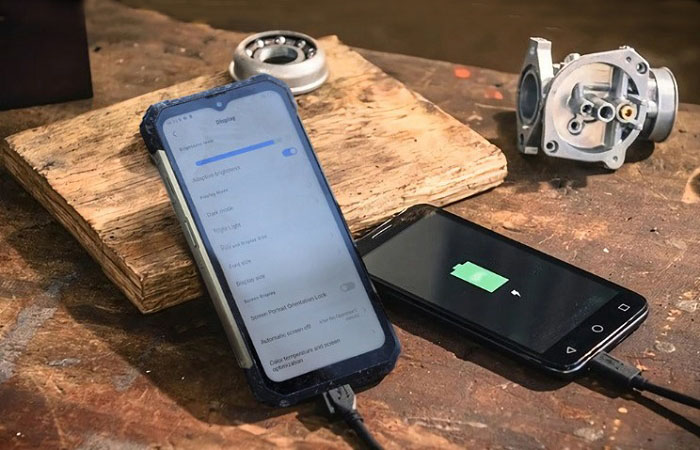Bluetooth Hacking: A Growing Threat
Welcome to visit rugged phone leader Blackview's blog. Hope this "Bluetooth Hacking" related guide helps.

Bluetooth is a wireless technology that allows devices to communicate with each other over short distances. It is a popular technology for a variety of devices, including smartphones, laptops, and headphones.
However, Bluetooth is also a potential security risk. Hackers can exploit vulnerabilities in Bluetooth to gain access to devices and steal data.
In recent years, there have been a number of high-profile Bluetooth hacking attacks. In 2017, a group of hackers used Bluetooth to steal data from millions of Android devices. In 2018, a Bluetooth exploit was used to take control of a Jeep Cherokee.
These attacks highlight the growing threat of Bluetooth hacking. As more and more devices use Bluetooth, it is important to be aware of the security risks.
- Read also: What is the latest Bluetooth version?
Bluetooth Hacking Techniques
Bluetooth hacking involves exploiting vulnerabilities in Bluetooth technology to gain unauthorized access to devices, intercept data, or control device functions. Bluetooth, commonly used for short-range wireless communication, operates within the 2.4 GHz frequency band and allows devices like phones, computers, and IoT devices to connect. Although convenient, Bluetooth can be a security risk if not properly managed. Here’s an overview of common Bluetooth hacking techniques and how they work.
1. Bluejacking
Bluejacking is one of the simpler forms of Bluetooth hacking. It involves sending unsolicited messages, like text or images, to nearby Bluetooth-enabled devices. Bluejacking doesn’t allow hackers to access data on the device, but it can be disruptive or used as a phishing technique to trick users into clicking on malicious links.
2. Bluesnarfing
Bluesnarfing is more invasive than Bluejacking. It exploits vulnerabilities in Bluetooth to access data on a device without the owner’s permission. Through Bluesnarfing, hackers can retrieve sensitive information such as contacts, messages, or call logs. This attack typically requires that Bluetooth is in “discoverable” mode, making the device visible to nearby devices.
3. Bluebugging
Bluebugging is a technique where hackers use Bluetooth vulnerabilities to take control of a device. Once they have access, they can perform actions like intercepting calls and messages, controlling internet access, or even spying on conversations. This attack often requires closer proximity but can be more damaging as it gives the hacker extensive control over the device.
4. Bluetooth Spoofing
Bluetooth spoofing, or “address spoofing,” involves impersonating another device. Hackers mimic the Bluetooth address of a trusted device, making the target think they’re connecting to a known device. This can lead to data interception or unauthorized access to secure areas or networks.
5. Man-in-the-Middle Attacks
A Bluetooth man-in-the-middle (MITM) attack occurs when a hacker intercepts the connection between two devices. By positioning themselves between the devices, they can access transmitted data or inject malicious data. MITM attacks typically exploit weak encryption or authentication.
Here are some tips to help protect yourself from Bluetooth hacking:
- Keep your devices up to date with the latest security patches. Software updates often include security fixes for Bluetooth vulnerabilities.
- Only pair your devices with trusted devices. When you pair your device with another device, the other device will be able to access certain features of your device. Only pair your device with devices that you trust.
- Disable Bluetooth when you're not using it. This will help to prevent hackers from connecting to your device.
- Use a strong password or PIN for your device. This will help to protect your device from unauthorized access.
- Be careful about what information you share over Bluetooth. Do not share sensitive information, such as passwords or credit card numbers, over Bluetooth.
- Use a mobile security app. There are a number of mobile security apps available that can help to protect your device from hacking. These apps can scan for and block malicious apps, and they can also help to encrypt your data.
- Be aware of the risks of using Bluetooth in public places. Hackers are more likely to target Bluetooth devices in public places, such as coffee shops and airports. If you must use Bluetooth in a public place, be sure to take extra precautions, such as disabling Bluetooth when you're not using it.
By following these tips, you can help to keep your devices safe from Bluetooth hacking.
The Future of Bluetooth Hacking
As Bluetooth technology continues to evolve, so too will the threats posed by Bluetooth hacking. Hackers are constantly looking for new ways to exploit vulnerabilities in Bluetooth devices.
In the future, it is likely that Bluetooth hacking will become even more sophisticated. Hackers may develop new techniques for stealing data, taking control of devices, or spreading malware.
It is important to stay up-to-date on the latest security threats and to take steps to protect your devices from Bluetooth hacking. By following the tips in this article, you can help to keep your devices safe.






